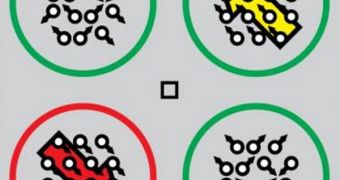Scientists have been familiar with the fact that the human mind features a “spotlight,” which is their way of referring to the processes that take place inside our heads when our attention brings to focus certain details from our environment, overlooking others. The spotlight functions just like the actual thing, highlighting some details and obscuring others by contrast. Now, scientists have just finished analyzing the parts of the brain that are involved in moving the mind's spotlight.
Researchers at the Salk Institute for Biological Studies have determined that structures known as superior colliculi, inside our brains, are not only responsible for controlling eye and head movements, but also for focusing the so-called spotlight on various targets. Details of their proposal appear in the December 20 issue of the renowned scientific journal Nature Neuroscience. According to the team, the new findings could hold significant implications for our understanding of the way the human brain engages in controlling attention.
Additionally, the new work also holds some promise for gaining a fresh perspective on the chronic attention problem, including the neglect syndrome, autism, and the attention deficit hyperactivity disorder (ADHD). “Our ability to survive in the world depends critically on our ability to respond to relevant pieces of information and ignore others. Our work shows that the superior colliculus is involved in the selection of things we will respond to, either by looking at them or by thinking about them,” the first author of the paper, Salk Institute graduate student Lee Lovejoy, explains.
He conducted the work together with SIBS Systems Neurobiology Laboratory Associate Professor Richard Krauzlis, PhD. “We often look directly at attended objects and the superior colliculus is a major component of the motor circuits that control how we orient our eyes and head toward something seen or heard,” the professor says. But humans and primates also have the ability of paying attention to an object of interest without directly looking at it. This is called the ability to attend covertly.
“Our results show that deciding what to attend to and what to ignore is not just accomplished with the neocortex and thalamus, but also depends on phylogenetically older structures in the brainstem, Understanding how these newer and older parts of the circuit interact may be crucial for understanding what goes wrong in disorders of attention,” Krauzlis concludes.

 14 DAY TRIAL //
14 DAY TRIAL //